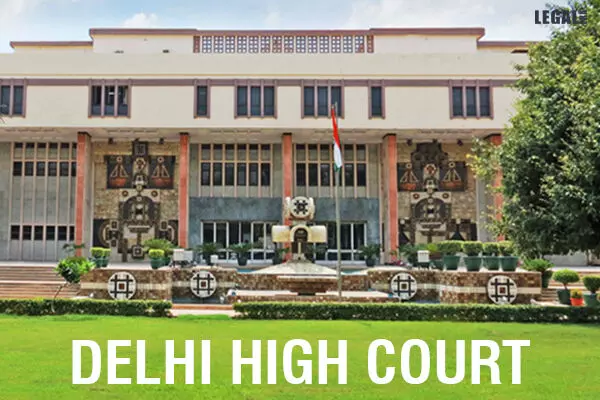- Home
- News
- Articles+
- Aerospace
- Agriculture
- Alternate Dispute Resolution
- Banking and Finance
- Bankruptcy
- Book Review
- Bribery & Corruption
- Commercial Litigation
- Competition Law
- Conference Reports
- Consumer Products
- Contract
- Corporate Governance
- Corporate Law
- Covid-19
- Cryptocurrency
- Cybersecurity
- Data Protection
- Defence
- Digital Economy
- E-commerce
- Employment Law
- Energy and Natural Resources
- Entertainment and Sports Law
- Environmental Law
- FDI
- Food and Beverage
- Health Care
- IBC Diaries
- Insurance Law
- Intellectual Property
- International Law
- Know the Law
- Labour Laws
- Litigation
- Litigation Funding
- Manufacturing
- Mergers & Acquisitions
- NFTs
- Privacy
- Private Equity
- Project Finance
- Real Estate
- Risk and Compliance
- Technology Media and Telecom
- Tributes
- Zoom In
- Take On Board
- In Focus
- Law & Policy and Regulation
- IP & Tech Era
- Viewpoint
- Arbitration & Mediation
- Tax
- Student Corner
- AI
- ESG
- Gaming
- Inclusion & Diversity
- Law Firms
- In-House
- Rankings
- E-Magazine
- Legal Era TV
- Events
- News
- Articles
- Aerospace
- Agriculture
- Alternate Dispute Resolution
- Banking and Finance
- Bankruptcy
- Book Review
- Bribery & Corruption
- Commercial Litigation
- Competition Law
- Conference Reports
- Consumer Products
- Contract
- Corporate Governance
- Corporate Law
- Covid-19
- Cryptocurrency
- Cybersecurity
- Data Protection
- Defence
- Digital Economy
- E-commerce
- Employment Law
- Energy and Natural Resources
- Entertainment and Sports Law
- Environmental Law
- FDI
- Food and Beverage
- Health Care
- IBC Diaries
- Insurance Law
- Intellectual Property
- International Law
- Know the Law
- Labour Laws
- Litigation
- Litigation Funding
- Manufacturing
- Mergers & Acquisitions
- NFTs
- Privacy
- Private Equity
- Project Finance
- Real Estate
- Risk and Compliance
- Technology Media and Telecom
- Tributes
- Zoom In
- Take On Board
- In Focus
- Law & Policy and Regulation
- IP & Tech Era
- Viewpoint
- Arbitration & Mediation
- Tax
- Student Corner
- AI
- ESG
- Gaming
- Inclusion & Diversity
- Law Firms
- In-House
- Rankings
- E-Magazine
- Legal Era TV
- Events
Delhi High Court: Pre-arbitration reference to DRC, not a bar to appoint arbitrator in absence of CE’s response to dispute notice

Delhi High Court: Pre-arbitration reference to DRC, not a bar to appoint arbitrator in absence of CE’s response to dispute notice
The bench noticed that no decision was reached within the given timeframe
The Delhi High Court has held that in a multi-tier dispute resolution clause, the failure to refer the dispute to the Dispute Resolution Committee (DRC) would not be a ground to refuse the appointment of an arbitrator. That is when the chief engineer against whose decision an appeal was to be filed before DRC, failed to respond to the notice.
The bench of Justice Sachin Datta held that it was incumbent upon the chief engineer to render its decision within the agreed timeframe.
The Court reiterated that the limitation of claims was a question of fact and law. It required detailed examination, which could only be done by the arbitrator and not the court exercising powers under Section 11 of the Arbitration and Conciliation (A&C) Act.
On 23 February 2017, the parties entered into an agreement for the construction of 100-seater JSC/toilets at JJ Cluster G.T. Road, Lal Bagh, Delhi. The petitioner was to carry out the construction work.
Clause 25 of the agreement provided that any dispute arising out or in connection with the agreement would be first referred to the chief engineer for his decision. Thereafter, the aggrieved party could appeal before the DRC. And any party aggrieved by the DRC decision could invoke the arbitration clause.
A dispute arose between the entities related to the non-payment of bills raised by the petitioner for the work carried out by it and wrote to the chief engineer to resolve the dispute. As the DRC failed to respond to the petitioner, he invoked the arbitration clause and issued the notice of arbitration. On failure of the parties to mutually appoint the arbitrator, the petitioner filed a petition under Section 11(6) of the A&C Act.
The respondent objected to the maintainability of the petition on the grounds:
a) The petitioner approached the court without exhausting the existing remedies given under the agreement.
b) In terms of Clause 25, the petitioner should have approached the DRC and sought its decision on the dispute. But it directly approached the court, therefore, the petition was premature.
c) The claims of the petitioner were time-barred as the cause of action for the same arose in 2017. However, the petition was filed after the expiry of three years limitation period.
The court analyzed that the petitioner issued several letters to the respondent seeking a resolution of its dispute. It also wrote to the executive and the chief engineer. Eliciting no response, it prompted the petitioner to invoke the arbitration clause.
The judge observed that under Clause 25, the chief engineer was supposed to give his decision within 30 days. But he failed to respond. Thus, the objections were misplaced, as in the eventuality, there would be no occasion for the petitioner to approach the DRC.
Thus, the bench allowed the petition and appointed a sole arbitrator.



